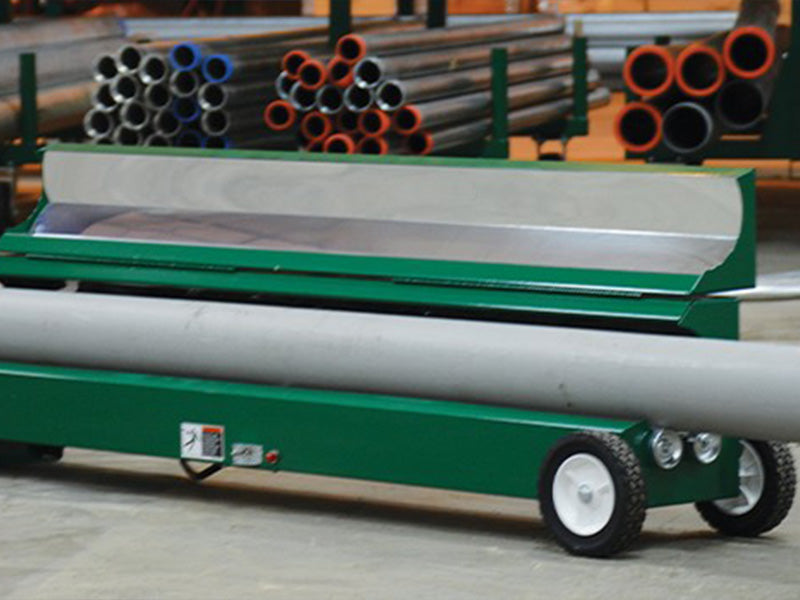Table of contents
Unlocking Electrical Safety: The Significance of PVC Conduit Fill Tables
WARNING:
For electrical work, consult a licensed electrician or the NEC for safety. Licensed electricians are well-versed in the NEC, state, and local codes.
Understanding the limits of PVC conduits and ensuring electrical safety is paramount. It's remarkable to note the significant reduction in fatalities and injuries related to electrical exposure over the years due to enhanced installation safety regulations.
In the 1970s , exposure to electricity alone accounted for nearly as many deaths as the entire exposure group today. While strides have been made, electricity remains the leading cause of fatalities among harmful substances and environments, contributing to one-fifth of all exposure fatalities in 2020.
This underscores the critical importance of maintaining electrical safety standards. Professionals can use tools like the conduit fill chart to optimize PVC conduit installations while mitigating risks and enhancing safety.
What is a PVC Fill Chart?
A PVC Fill Chart is a valuable reference tool for electrical installations, allowing users to determine the maximum allowable number of wires that can be safely placed within PVC conduit, such as Schedule 40 or 80. Each row in the chart represents a different conduit size, while each column represents a different wire gauge.
Based on the 2020 NEC code, the chart ensures compliance with safety standards, prevents overcrowding of conduits, optimizes conduit selection, and helps electricians and installers make informed decisions about conduit and wire choices for efficient, code-compliant electrical systems.

What is PVC Conduit?
PVC, short for Polyvinylchloride, is a durable and chemically resistant synthetic resin that has been a staple in protecting power in residential, telecommunications, and utility applications since 1932 . A PVC electrical conduit, often recognized as a white rigid PVC tube, is designed to thread and safeguard wires, shielding them from corrosion and electrical leakage.
Regarding home improvement projects, one of the most fundamental aspects is setting up the wiring system. A PVC electrical conduit comes into play to ensure the wires are adequately shielded during this process. Given the variation in wire thickness, PVC electrical conduit is available in various size specifications to accommodate different arrangements.
What sets PVC electrical conduit apart is its ability to resist burning, electrical leakage, corrosion, moisture, and the effects of sunlight. This makes it particularly suitable for outdoor projects, where it protects both wires and the workers involved in the installation process.
Are PVC pipes and PVC Conduit the same?
PVC pipe and PVC conduit , although made from the same plastic, serve distinct purposes and shouldn't be interchanged. PVC pipes are used in plumbing, while PVC conduits are employed in electrical applications.
Here are the key differences:
- Pressure Test: PVC pipes are pressure-tested and rated for plumbing applications. Conduits lack pressure testing and are unsuitable for plumbing, increasing the risk of leaks.
- Wall Thickness: PVC pipes have thicker walls, ensuring strength and resistance to bending. Conduits, designed for electrical use, have thinner walls for cost-efficiency.
- Ultraviolet Resistance: Plumbing PVC degrades when exposed to sunlight, making it unsuitable for outdoor use. In contrast, PVC conduit is UV-rated, making it suitable for outdoor applications.
- Pipe Tapering : Plumbing PVC requires couplers and cement for connections, while electrical PVC conduit often features flared ends, allowing easy attachment without couplers.
Greenlee PVC Conduit Benders: The Professional's Choice
Using a Greenlee electric bender for PVC conduit is a straightforward process that ensures precise bends. Preparing to use this tool is as simple as following a few key steps.
Here's a quick guide to using the Greenlee electric bender for PVC conduit:
- Preheat : Preheat the bender for about 10 minutes to ensure the PVC conduit can be bent without damage.
- Position the PVC: Once the bender is appropriately preheated, open the lid and position the PVC conduit within the bender.
- Close the Lid: Close the lid to create a controlled and even heating environment.
- Rotate Until Pliable: Rotate the bender as needed until the PVC conduit becomes pliable. This step is crucial for achieving the desired bend.
- Open the Lid: Carefully open the lid once the PVC conduit reaches the right level of pliability.
- Remove the PVC: With the lid open, gently remove the PVC conduit from the bender.
- Form the Bend: The pliable PVC conduit can now be easily shaped into the desired bend, ensuring your conduit fits your project's specific requirements.
Check out our top choice PVC Benders from Greenlee
Greenlee 849 1/2" - 2" Electric PVC Heater/Bender
The Greenlee 849 has a double-wall metal design with a 1/2" to 2" PVC capacity. It operates on 120 VAC, 20 Amp, or a 3000-watt generator. Weighing just 15 lbs, it's a portable and efficient choice.
Greenlee 851 1/2" - 4" Electric PVC Heater/Bender
The Greenlee 851 can handle 1/2" to 4" PVC. Operating on 120 VAC, 20 Amp, or a 3600-watt generator, it weighs 53 lbs, making it robust.
Greenlee 847 1/2"-6" Electric PVC Heater/Bender (Non-Motorized)
The Greenlee 847 is non-motorized and can handle 1/2" to 6" PVC. Operating on 230 VAC, 30 Amp, or a 7000-watt generator, it weighs 78 lbs.
Greenlee 848 1/2"-6" Electric PVC Heater/Bender with Motorized PVC Rotation
The motorized Greenlee 848 can handle 1/2" to 6" PVC, operates on 230 VAC, 30 Amp, or a 7000-watt generator, and weighs 80 lbs.
Are you interested in learning more? Click here for more information.
Global Market Research for PVC Conduit
The global PVC conduit market is experiencing robust growth, with a projected value of over $9.95 billion by 2030 and a steady 4.4% compound annual growth rate (CAGR) from 2022 to 2030. This surge is driven by the increasing demand for electricity and the need to modernize grid infrastructures. Rural electrification, infrastructure upgrades, and the shift to underground electrical systems have further fueled this expansion.
PVC conduit's widespread adoption can be attributed to its outstanding durability, corrosion resistance, and straightforward handling. With high tensile strength and resistance to extreme temperatures, it excels in challenging environments. Its flexibility also allows for faster installation, making it ideal for data center projects.
Moreover, PVC's resilience and long service life, which can exceed 100 years for underground applications, result in substantial cost savings. The recyclability of PVC further enhances its appeal, aligning with stringent environmental regulations.
These factors position PVC conduits as the preferred choice in the electrical industry, with a promising outlook for continued market growth.
Wrapping Up the PVC Fill Table
Overall, the PVC fill table is a valuable tool for accurate conductor calculations, aiding professionals in the electrical field. Additionally, we delved into the dynamic expansion of the global PVC conduit market, with an anticipated valuation surpassing $9.95 billion by 2030. This growth is attributed to the rising demand for electricity, infrastructure modernization, and the transition to underground electrical systems.
We also highlighted the key distinction between PVC pipes and PVC conduit, emphasizing their unique applications in their respective industries, plumbing and electricity.
As a top distributor, we're dedicated to offering Greenlee electrician tools , including conduit bending and benders, known for their quality and reliability, to enhance efficiency and precision in electrical projects. We're committed to being your trusted source for top-notch Greenlee electrician tools and expertise in the field.
PVC Fill Table Frequently Asked Questions
What happens if conduits are overfilled?
Overfilling conduits can lead to heat buildup, voltage drop, and potential damage to wires. It's crucial to adhere to the maximum allowable fill percentages to maintain system safety and performance.
What are the advantages of using PVC conduit in electrical work?
PVC conduit offers several benefits, including corrosion resistance, durability, ease of installation, and affordability. It protects electrical wiring from environmental factors and is suitable for indoor and outdoor use.
Are PVC Fill Tables standardized across the industry?
PVC Fill Tables are generally based on industry standards and guidelines, but local electrical codes may vary. It's essential to consult the table and local regulations for accurate conduit sizing.
Is PVC conduit compatible with all types of electrical wiring, such as THHN or THWN?
PVC conduit is compatible with various electrical wiring, including THHN and THWN wires. It provides an adaptable solution for routing and protecting multiple types of electrical cables and conductors.
Is PVC conduit suitable for all environments?
PVC conduit is primarily intended for dry locations. It lacks corrosion resistance and watertight properties, making it less suitable for wet or corrosive environments. In such cases, alternative conduit types like PVC-coated or rigid metal conduits may be more appropriate.
What is the NEC code for PVC conduit support?
Section 352.30(A) states, "PVC conduit shall be securely fastened within 3 ft of each outlet box, junction box, device box, conduit body, or other conduit termination. Conduit listed for securing at other than 3 ft shall be permitted to be installed in accordance with the listing."

